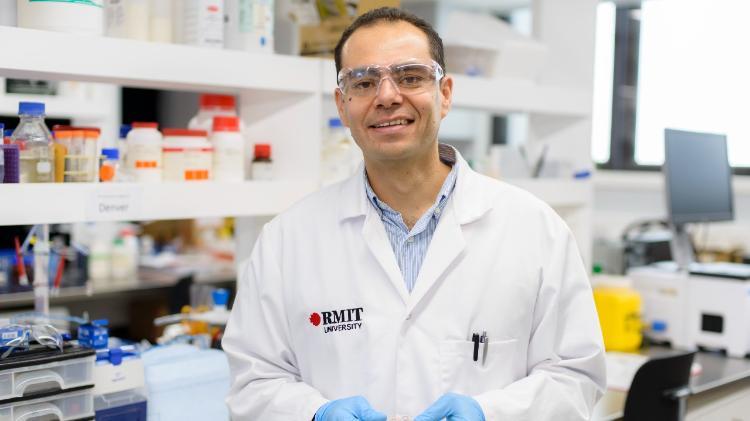July 26, 2021
Steel Hub Researcher investigates the design of antifungal surfaces
Dr Arturo Aburto Medina is a Research fellow at the School of Science at RMIT University. He obtained his PhD from the University of Essex, UK. He has conducted postdoctoral studies at the University of California Irvine and Flinders University and has held lecturing positions at Universidad Autonoma Metropolitana and Instituto Tecnologico de Estudios Superiores de Monterrey. His research interests include drug discovery, conservation of the environment, the bioremediation of contaminated sites and the fabrication and optimisation of antimicrobial surfaces.
Recently, Arturo’s research has centred on the design of antifungal surfaces, specifically against filamentous fungi, which are possible sources for the infestation of various built environments. Within the built environment, Arturo and the team led by Professor Elena Ivanova have identified several antifungal approaches and classified them into two major categories: the use of nanoparticle-based coatings via nanoparticles functionalisation and the chemical and physical modification of the material surface. The coatings may have photocatalytic antifungal properties (TiO2, ZnO) or functionalised with biocides, Ag, and p-nitrophenol among others.
Within the physical-chemical modifications category, the use of graphene oxide-borneol, addition of biogenic compounds and surface modification making it super-hydrophobic have been trialled. The latter had the highest efficiency since spores were easily removed with a gentle water wash (Aburto-Medina, Le et al. 2021).
Therefore, by creating/modifying surfaces, the aim was to obtain a robust and efficient antifungal surface as was observed against bacterial strains. The modification of the surfaces involves the creation of nanostructured surfaces that resemble/mimic those of insect wings with confirmed antibacterial and potential antifungal properties. Exhaustive work on nanostructured surfaces has also revealed that the flexibility of individual nanopillars and its mechanical energy is critical for its antibacterial activity (Ivanova, Linklater et al. 2020).
To confirm the antifungal activity on insect wings, suspensions of filamentous fungal strains Aspergillus brasiliensis and Epicoccum nigrum were inoculated on super-hydrophobic damselfly Calopteryx haemorrhoidalis wings. It was observed that the wings prevented the attachment of the spores for at least one week on water immersion. The entrapment of air on the damselfly wings was revealed as the main cause to prevent the attachment, since spores could not cross the air-liquid interface and although bacteria did, they were ruptured on the wing’s nanopillar surface. Thus, the surface is resistant to bacterial and fungal attachment via a dual action: repelling the conidia and killing bacteria on direct contact (Ivanova, Linklater et al. 2021).
This information is critical for the design and fabrication of antifungal surfaces and the wings’ features will be reproduced on other materials (titanium, stainless steel) to be used in the construction, medical and food sectors.
Arturo is also involved in parallel research that has elucidated unique characteristics of the surface nanoarchitecture of titanium, which limit Candida albicans attachment and its biofilm formation (Le, Nguyen, Aburto-Medina et al. 2020).
Previous research led to the identification of carbohydrates and polysaccharides as the main components during the initial and reversible attachment of filamentous fungi to polyester surfaces.
